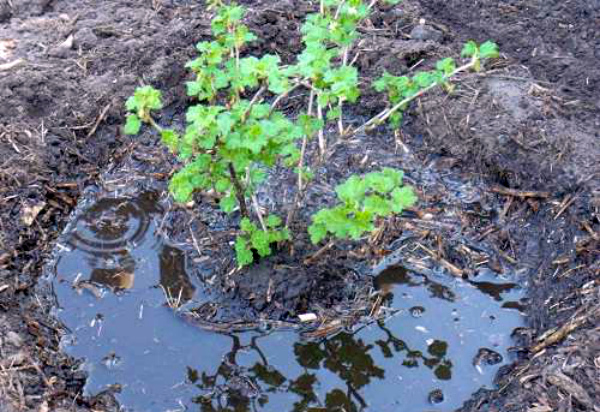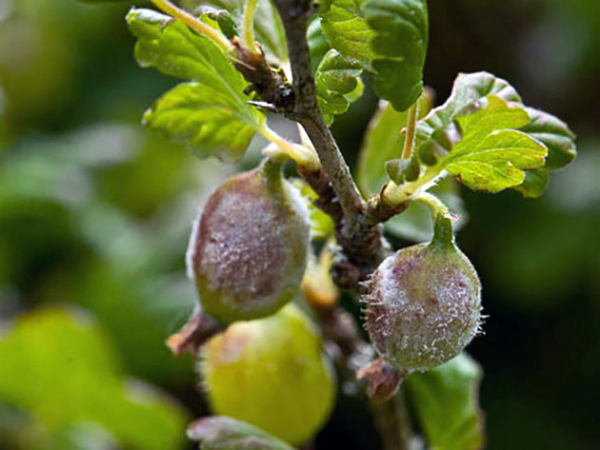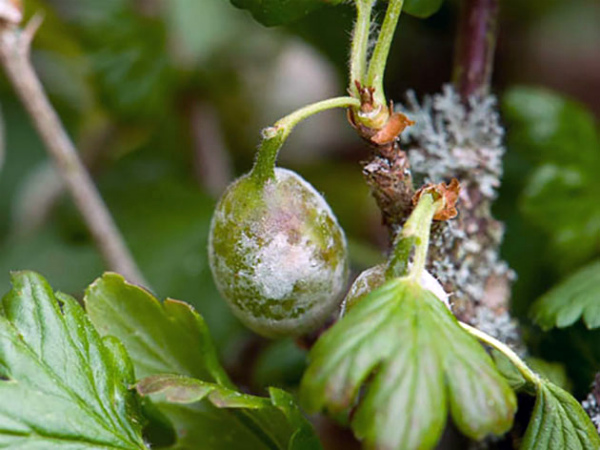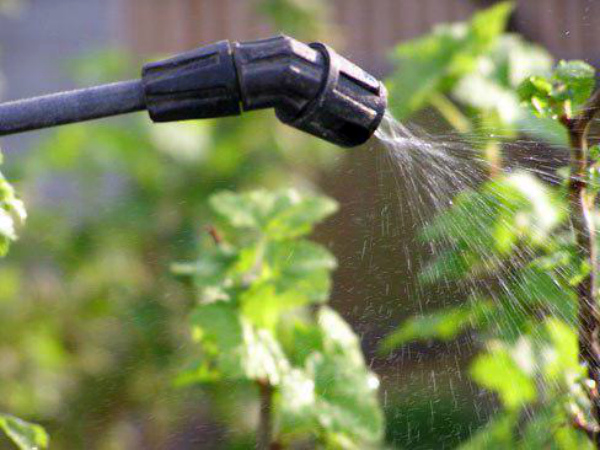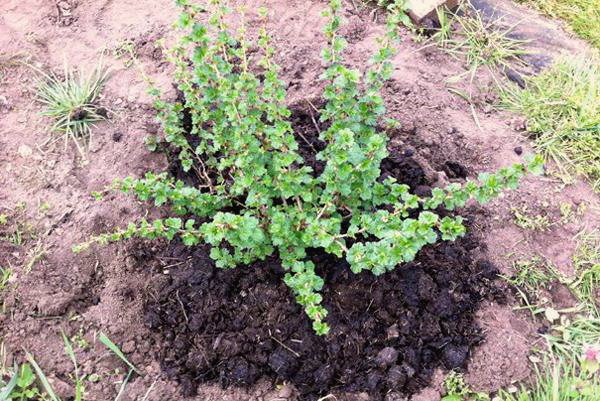Why does gooseberry mold appear
Content
Features of growing gooseberries
The gooseberry is considered a very high-yielding crop. Subject to agricultural technology, one bush can bear fruit for more than 20 years. There have been cases when the bushes yielded up to 40 years, but for this, of course, the plants need to be paid a lot of attention.
In general, the culture is undemanding, but there are some features that must be taken into account when planting and further growing.
The area for planting gooseberries should be as illuminated as possible. In the shade, the yield will be low, the berries are small, and the bush itself will often hurt.
No less important for the culture is moderate humidity, which it is desirable to maintain constantly.
Gooseberries are hygrophilous, but excessive moisture is just as harmful to it as drought. If the plant is constantly in moist soil, rotting of the root collar of the shoots develops, which leads to the death of the entire bush.
Do not plant gooseberries in heavy clay or podzolic soils - in such soil, the likelihood of fungal diseases also increases.
In order for the bush to produce high yields, the soil around it must be loosened frequently and thoroughly - this procedure increases the air permeability of the soil.
In autumn, the soil around the bushes must be well dug up and fertilized (humus, compost, superphosphate, saltpeter). During digging, it should be borne in mind that the root system is located close to the surface, therefore, along the perimeter of the bush, the soil can only be gently loosened, and outside the perimeter and in the aisles it can be radically dug up.
Weed control is very important for the healthy appearance of plants. Many weeds are a good breeding ground for various viruses and bacteria that can easily migrate to gooseberry bushes.
In late autumn, after the foliage has fallen or in the spring, before the buds appear, it is necessary to form bushes (cut off dry and excess shoots). Excessive density of branches and leaves leads to the fact that the bush is poorly ventilated, moisture stagnates on the leaves, which leads to the development of fungal diseases.
Various harmful insects (aphids, sawflies, moths) often settle on the gooseberry. To combat them, it is necessary to spray the bushes with insecticides, biological products (for example, "Karbofos"), ash solution.
One of the biggest challenges in growing gooseberries is their susceptibility to fungal diseases. Berries, leaves and even shoots rot, become moldy, which also requires regular processing of the bushes.
Many problems can be avoided by choosing the right crop planting site. If the gooseberry is planted in the sun, then the likelihood of fungal infection is significantly reduced, since wet leaves and berries quickly dry out from rain, dew, after watering. In addition, the soil under the bushes also dries up in a timely manner.If plaque constantly appears on your gooseberry, try replanting it in a sunny place - most likely, it will begin to grow and bear fruit better there.
Mold damage
White, gray or greenish bloom on gooseberries is a sign of fungal infection. The most common fungal disease is powdery mildew. The spores of this fungus are very tenacious - they winter safely in the ground, and in spring, when the soil is still wet, but already warmed up, they show their activity.
The disease can be recognized by the following signs:
- first, the berries are covered with a dense or slightly friable white bloom;
- then the coating becomes denser, acquires a yellow or grayish tint;
- over time, the entire bush is covered with bloom, including leaves and shoots;
- if the bushes are not processed in time, the plaque dries up and becomes brown in color;
- if the bush grows in the shade or in excessive moisture, the mold on the berries may be slightly fluffy, gray or greenish in color.
The spread of powdery mildew on gooseberries begins from the bottom of the bush, since it is the lower tiers that are closer to the ground.
First of all, the fungus appears on the berries - this is due to the fact that the mycelium is nourished through the integumentary layers of the fruit. Over time, under the influence of wind, insects, spores are transferred to the branches and leaves of the gooseberry.
Of course, the disease, first of all, affects the appearance of the berries, but one should not forget that in the absence of therapeutic measures, the complete death of the bush is possible. Leaves affected by the fungus curl and dry, the berries dry up and crumble, and in a very humid environment, fruit rot is possible.
Video "American Powdery Mildew on Gooseberries"
This video is dedicated to the prevention and treatment of a fungal disease that affects all parts of the gooseberry (leaves, ovaries, berries and young shoots).
Reasons for the appearance
The appearance of bloom on berries does not depend on the gooseberry variety or the climate of the region where it grows. As mentioned above, the main reason for the development of powdery mildew on gooseberries is a fungus that throws out its spores under certain conditions. There are a number of prerequisites and factors for its activation:
- high humidity of the soil and air - during the rainy season, in cloudy weather, with too intensive watering, the most favorable conditions are created for the development of the disease;
- insufficient distance between gooseberry bushes - even if only one bush is affected, fungal spores quickly spread to nearby plants if they are planted at a distance closer than 1.5–2 m;
- proximity to weeds - weeds are good carriers of infections and bacteria;
- heavy soil - dense soil is very poorly permeable to air and dries out slowly, which also contributes to the development of fungal flora;
- pollinating insects - most often the fungus infects gooseberries during or after flowering, and it is at this moment that its spores are easily carried by insects.
Mold control
The surest way to fight fungal diseases is prevention. You need to spray gooseberries at least three times per season: before flowering, immediately after its completion and in the fall before the leaves begin to fall. The last time, before wintering, the bushes are treated especially carefully, since with the fallen leaves the fungus will fall into the ground, and in the spring it will manifest itself again. Spores are perfectly preserved in dry foliage, therefore, after falling off, it must be collected and burned.
If powdery mildew does appear on the gooseberry, then there are several ways to deal with it, which will be described below.
Spraying with a solution of soap and copper sulfate. It is necessary to dissolve 20 g of vitriol and 100-150 g of laundry soap in 10 liters of water. Technically, it is not easy to make such a solution, since both components are poorly soluble in water. In order for the soap to dissolve as soon as possible, it must be grated. Vitriol is stirred in hot water and only then poured into a soapy solution.
Fungicide treatment. Before and during flowering, gooseberries can be sprayed with special preparations against powdery mildew (Topaz, Vectra, Cumulus). When processing, it is very important to observe the dosage indicated in the instructions.
Treatment of the soil around the bush. It is possible to prevent the appearance of mold on the gooseberry if in advance, before the buds appear, water the ground around the bush with a solution of vitriol (10-15g / 5-7 liters of water). A more natural way to prevent plaque on berries is to use a solution of soap and baking soda (2 tablespoons of baking soda, 50 g soap / 10 L of water). You can not only water the ground with a soda solution, but also spray the plant itself.
Spraying with a solution of soda and aspirin. For the working solution, you need to take 1 spoonful of soda, liquid soap and vegetable oil, 1 aspirin tablet and stir it all in 5 liters of water. This solution can be used to treat gooseberries throughout the spring-summer period with an interval of 2 weeks between sprays.
Treatment of bushes and soil with an ash solution. Furnace ash (2 kg) must be poured with water (10 l), mixed and boiled for 30 minutes. The cooled solution is filtered and the bushes are sprayed from the end of May, when the flowers begin to bloom, and until mid-June, until the ovaries form. The rest of the solution is poured over the ground around the bushes.
Kefir or sour milk. The product is diluted with water in a ratio of 1 liter of kefir (milk) to 9 liters of water and the bushes are sprayed with the agent three times with a break of 3 days from the moment when the inflorescences begin to bloom on the gooseberry.
Infusion of onion peels. The dried husk (200 g) is poured with boiling water (10 l) and insisted for 2 days. The resulting infusion is sprayed on the bushes before and after flowering, and then in late autumn, when the leaves on the gooseberry turn yellow.
Liquid mullein. For 3 parts of water, you need to take 1 part of manure, stir and insist for 3 days. Then strain the resulting solution, dilute with water to a volume of 10 liters and process the bushes three times: before and after flowering, as well as before the foliage falls.
These simple recipes or ready-to-use remedies can help restore health to your gooseberries. However, try not to let the fruits become bloom, carry out prevention on time, and then the bushes will delight you with delicious berries every summer.
Video "Treatment of gooseberry mold"
The author of this video shares his personal experience of getting rid of his berry bush from mold infection.


